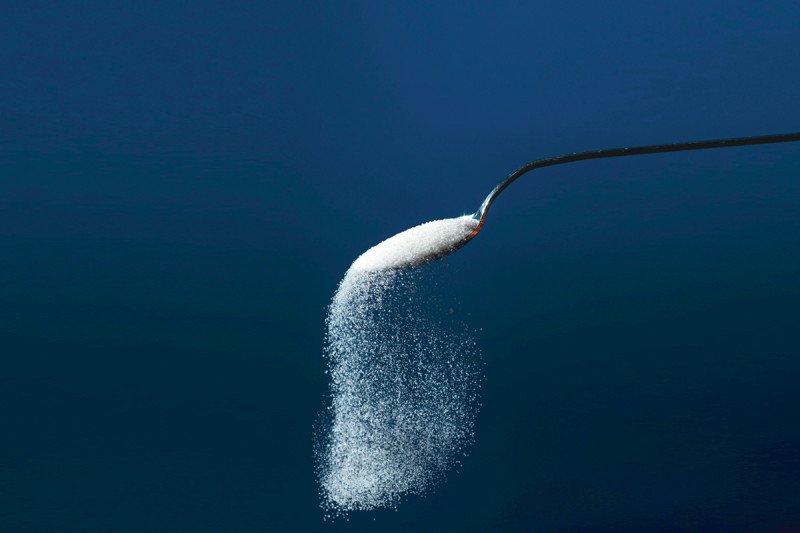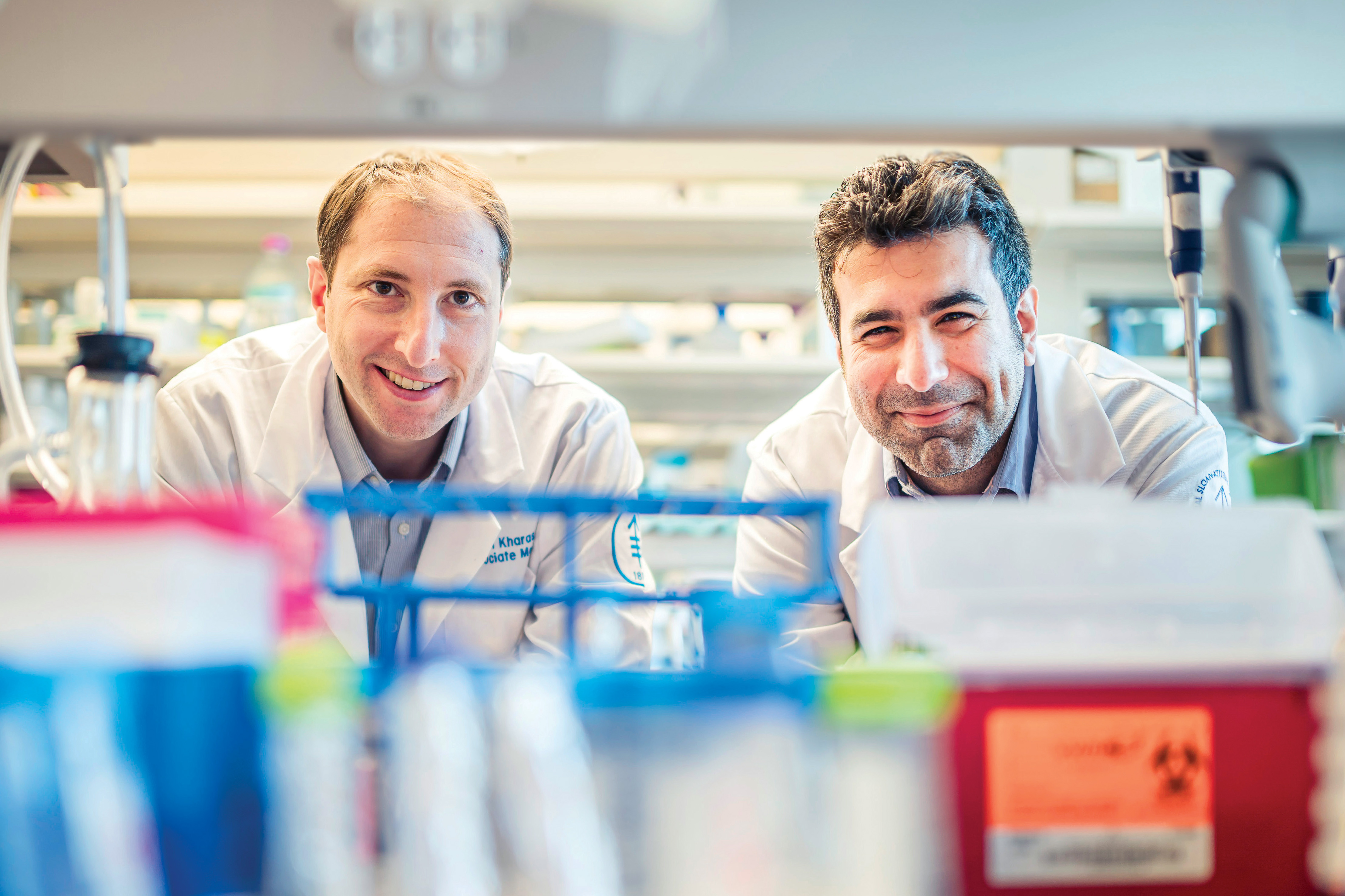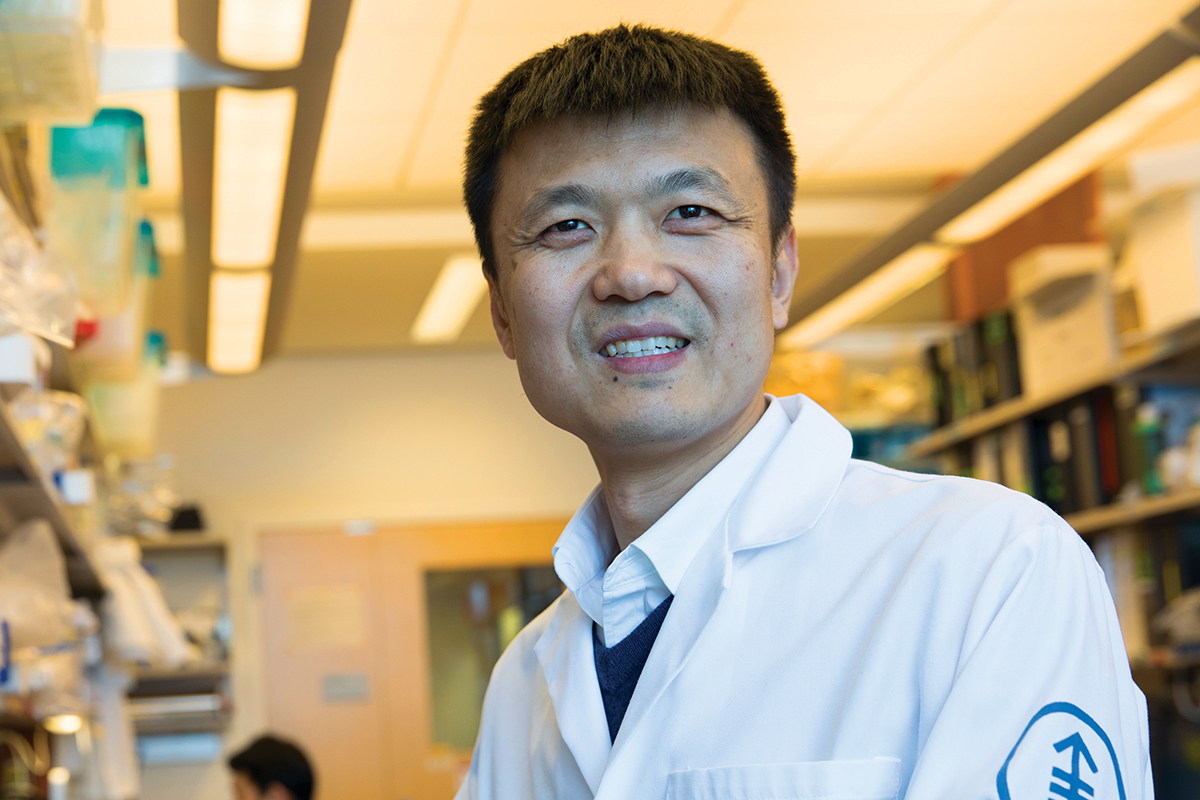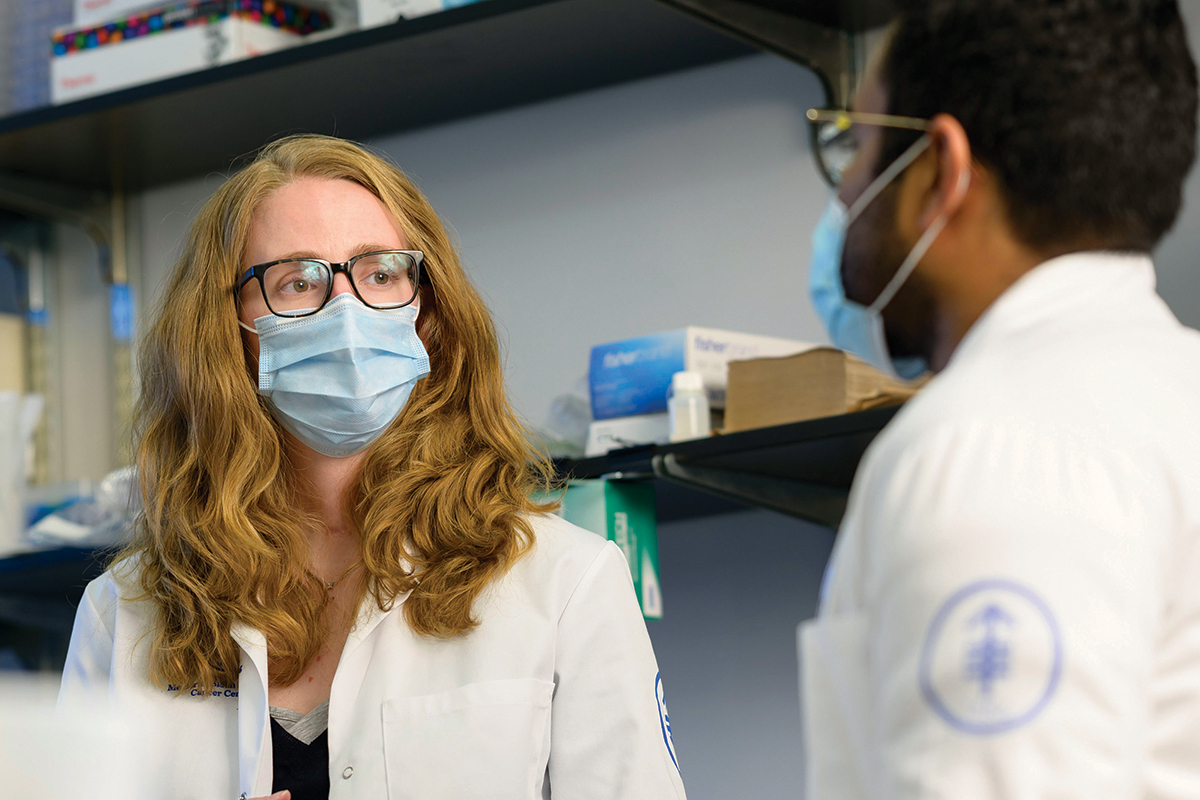The Cancer Survivors Network (CSN) is a peer support community for cancer patients, survivors, caregivers, families, and friends! CSN is a safe place to connect with others who share your interests and experiences.
Sugar

Sweet Revenge: Taking Advantage of Cancer Cells’ Hunger for Sugar and Other Nutrients

Americans have a love-hate relationship with sugar. Our favorite foods are full of it, yet nutritionists warn that sugar provides empty calories — good for putting on weight but not much else. Cancer doctors are concerned, too, since obesity is a major risk factor for cancer.
Scientists have known for over a century that cancer cells have a great appetite for sugar. It’s the basis for the diagnostic imaging test called a PET scan. Tumors take up sugar at much higher rates than normal cells, and you can see this difference on film: the darker the spot, the higher the sugar uptake.
Why cancer has such a taste for sugar is not fully understood. But researchers at Memorial Sloan Kettering are taking a fresh look at this and related questions about cancer metabolism. By understanding the unique ways that cancer cells break down and use sugar and other nutrients, scientists hope to be able to turn cancer’s appetite against itself.
What’s in the White Stuff?
When most people hear the word sugar, they think of the white crystals that give cakes and pastries their sweetness. This particular form of sugar is sucrose, which is actually a combination of two different sugar molecules, glucose and fructose, linked by a chemical bond.
MSK is revolutionizing the way cancer is diagnosed and treated. Learn more about how your generosity makes this possible.
Learn more
When we eat foods containing sucrose, our bodies break it apart into glucose and fructose molecules. Glucose is one of the body’s main fuels. It is delivered to our muscles, which use it for energy, while fructose is quickly used up by the liver or converted to glucose.
Fructose has a fleeting existence in the body, which is why it hasn’t received as much attention from cancer researchers as glucose. But that’s beginning to change. In December 2020, molecular pharmacologists Kayvan Keshari and Michael Kharas published a study in the journal Cell Metabolism that looked at fructose’s role in leukemia. The scientists became interested in the topic after observing high levels of fructose in the bone marrow of people with acute myeloid leukemia (AML), a type of blood cancer.
“Fructose sugar really shouldn’t be present at those levels in the bone marrow,” Dr. Keshari says. “We wondered: What if fructose is present in high amounts around the AML cells? If so, can they use it, and what are they doing with it?”

Michael Kharas (left) and Kayvan Keshari
Back to top
What’s Sugar Doing in People with Leukemia?
To answer these questions, the researchers designed a system to follow what happens when AML cells are fed a diet of fructose. They discovered that AML cells can indeed consume the fructose, but they must metabolize it in a unique way: They launch a series of chemical reactions called the serine synthesis pathway (SSP). The SSP is an alternative means of metabolizing sugar, one that can be blocked with the use of drugs. That gave the researchers an idea.
“It raised the question: Could we create a situation where we force the cancer cells to use the serine synthesis pathway — and then we block the pathway so that the cells die?” Dr. Keshari says. It would be like forcing traffic to an off-ramp that leads to a dead end.
The researchers explored doing just that by using mouse models of leukemia. They injected mice with fructose and then gave them anti-SSP drugs. It worked. This combination effectively prevented leukemia growth in the mice. The hope is that this approach will have the same effect in people with leukemia.
Back to topMetabolism: Everything Old Is New Again
Cancer biologists have been researching metabolism for 100 years. Back in the 1920s, a German biologist named Otto Warburg was the first to observe that cancer cells tend to consume extraordinary amounts of glucose and break it down in a seemingly inefficient way called aerobic glycolysis — now known as Warburg metabolism. His discovery led to a flurry of research into the relationship between metabolism and cancer and also biochemical pathways. Textbooks are filled with these studies.
Play Video
Video Details
But interest in metabolism began to wane in the 1940s, when scientists discovered that DNA contains our genetic information. From that point on, determining how genes work took center stage among many biologists.
But metabolism is hot once again — thanks in part to work done by MSK researchers over the past decade. They have found that the molecules of metabolism can directly influence the work a cell performs, including turning certain genes on or off, which can lead to cancer. Those discoveries have encouraged researchers to dust off their textbooks and revisit Warburg’s century-old observation, this time applying what they’ve learned about genes, proteins, and signaling pathways.
Back to topThe Commander-in-Chief of Metabolism

MSK immunologist Ming Li
One such researcher is Sloan Kettering Institute immunologist Ming Li. In a paper published in January 2021 in Science, he and his colleagues discovered a new reason why fast-dividing cells, like cancer and immune cells, rely on Warburg metabolism in the first place.
It comes down to a link between Warburg metabolism and the activity of a powerhouse enzyme in the cell called PI3 kinase.
“PI3 kinase is a key signaling molecule that functions almost like a commander-in-chief of cell metabolism,” Dr. Li says. Only PI3 kinase can give the orders for the cellular tasks that require a lot of energy — including cell division.
Back to topTaking Away the Chief’s Megaphone
As cells shift to Warburg metabolism, the activity of PI3 kinase is increased, and in turn, the cells’ commitment to divide is strengthened. It’s a bit like giving the commander-in-chief a megaphone.
Dr. Li and his team also found what could silence the megaphone. They discovered that in mice, immune cells lacking the enzyme LDHA could not sustain their PI3 kinase activity.
Though uncovered in immune cells, the finding has clear implications for cancer. “PI3 kinase is a very critical kinase in the context of cancer,” Dr. Li says. “It’s what sends the signal for cancer cells to divide and multiply, and it’s one of the most overly active signaling pathways in cancer.”
The big idea is this: Cancer cells may employ Warburg metabolism as a way to keep marching, dividing, and growing. The results raise the intriguing possibility that doctors could curb cancer growth by blocking LDHA — the Warburg “switch.”
Back to topBut It’s Not All Sugar’s Fault
With all this talk about sugar and cancer, it’s easy to get the idea that sugar is a demon substance to be avoided at any cost. Not really. Sugar is, of course, present in sweeteners, but it is also a natural component of many foods, including fruits and vegetables, breads, and meats. These foods contain sugar in the form of complex carbohydrates, which are long, interconnected chains of glucose.
When your body digests food, it breaks down these complex chains into glucose molecules. Those it cannot digest become fiber, which is good for you.
The problem is not sugar per se, but added sugar — sugar that is added to foods without the accompanying fiber and other nutrients provided by fruits, vegetables, and whole grains.

MSK cell biologist Lydia Finley and graduate student Sanjeethan Baksh
It’s simply not possible to completely remove sugar from your diet, nor is there any reason to try. Sugars are a necessary part of a healthy diet. Your brain runs primarily on glucose, and your immune system needs it to function, too. What’s more, even if you never picked up another piece of bread or chocolate again, your blood would still contain plenty of glucose because it can create it from other ingredients.
And sugar isn’t the only nutrient that cancer cells need to grow. Besides sugar, cancer cells also rely on other nutrients, including fats and amino acids. Some of these can have more dramatic effects than sugar — even influencing the formation of cancer in the first place.
SKI cell biologist Lydia Finley recently discovered the critical role played by amino acids in squamous cell carcinoma, a cancer that arises from stem cells in the skin. Stem cells have the unique ability to divide throughout life to replace cells that die or wear out.
Back to topStarving Cancer Stem Cells
Using mouse models and cells growing in a dish, Dr. Finley and her colleagues in the Elaine Fuchs Lab at The Rockefeller University found that the amount of an amino acid called serine in a stem cell’s environment determines its decision to keep dividing in its current form — or to differentiate and grow up. Differentiated cells generally do not form cancer.
Lydia Finleycell biologist
“The stem cells that give rise to squamous cell carcinoma seem to be highly dependent on extracellular serine for their growth,” Dr. Finley says.
The team is currently looking for ways that they might be able to keep cancer stem cells from taking up serine in the hope of curbing cancer growth.
Which brings us back to the diabolical — and delightful — idea that we can play a trick on cancer cells using their own greedy appetite for sugar and other nutrients. We could turn cancer’s metabolism against itself, starving cells to death. Sweet revenge indeed. •
Discussion Boards
- All Discussion Boards
- 6 Cancer Survivors Network Information
- 6 Welcome to CSN
- 122.6K Cancer specific
- 2.8K Anal Cancer
- 456 Bladder Cancer
- 312 Bone Cancers
- 1.7K Brain Cancer
- 28.6K Breast Cancer
- 407 Childhood Cancers
- 28K Colorectal Cancer
- 4.6K Esophageal Cancer
- 1.2K Gynecological Cancers (other than ovarian and uterine)
- 13.1K Head and Neck Cancer
- 6.4K Kidney Cancer
- 682 Leukemia
- 803 Liver Cancer
- 4.2K Lung Cancer
- 5.1K Lymphoma (Hodgkin and Non-Hodgkin)
- 242 Multiple Myeloma
- 7.2K Ovarian Cancer
- 70 Pancreatic Cancer
- 493 Peritoneal Cancer
- 5.6K Prostate Cancer
- 1.2K Rare and Other Cancers
- 544 Sarcoma
- 744 Skin Cancer
- 660 Stomach Cancer
- 192 Testicular Cancer
- 1.5K Thyroid Cancer
- 5.9K Uterine/Endometrial Cancer
- 6.4K Lifestyle Discussion Boards